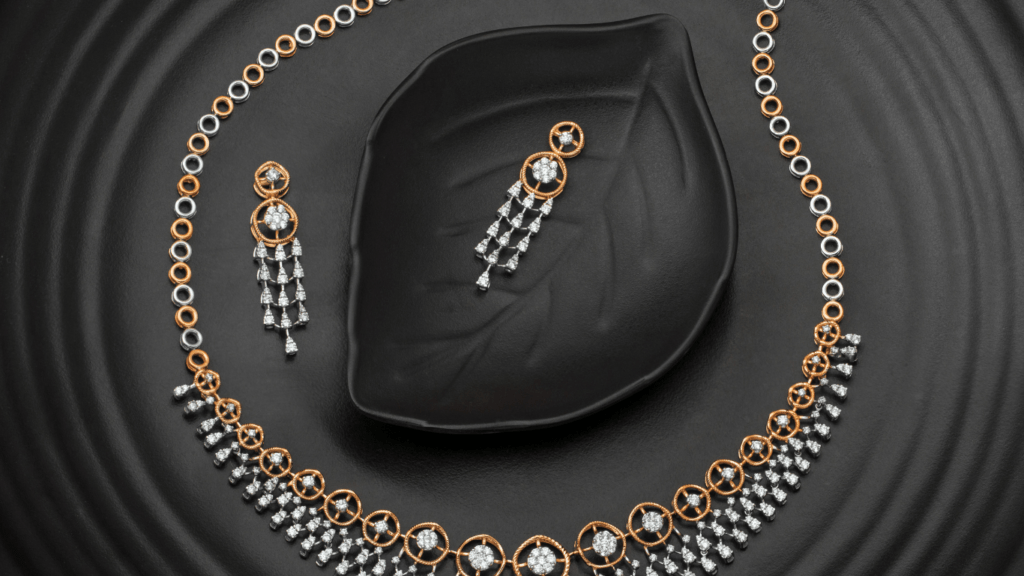The Origin of Chanel
Chanel’s roots trace back to 1910 when Gabrielle “Coco” Chanel opened her first millinery shop, Chanel Modes, in Paris. She quickly gained recognition for her elegant hat designs, attracting high-profile clients like French actress Gabrielle Dorziat. Her talent and fresh fashion perspective laid the foundation for her future success.
In 1913, Chanel expanded to Deauville with a new boutique selling casual, sporty clothing for women. This marked a significant shift in women’s fashion by embracing relaxed yet chic styles. Her designs, featuring simple lines and neutral colors, resonated with the modern woman seeking both comfort and sophistication.
By 1915, Chanel had further cemented her brand’s popularity by opening a couture house in Biarritz. This move allowed her to cater to an affluent clientele who appreciated her innovative use of jersey fabric. Jersey, traditionally used for men’s underwear, became synonymous with Chanel’s revolutionary approach to fashion, providing both luxury and practicality.
Chanel’s origin story is deeply intertwined with her desire to break away from the restrictive corsets and ornate fashion of her time. She envisioned a wardrobe that offered practicality without sacrificing style. Chanel’s impact extended beyond mere aesthetics; her designs symbolized a new era of women’s independence and empowerment.
Throughout the 1920s, Chanel expanded her brand further with the introduction of iconic pieces such as the little black dress and Chanel No. 5 perfume. Each addition solidified Chanel’s status as a luxury icon. Her innovative spirit and dedication to timeless elegance laid the groundwork for a brand that continues to influence global fashion.
Coco Chanel: The Visionary Behind the Icon
Chanel’s story is intertwined with the remarkable life of its founder, Coco Chanel, whose innovative vision and indefatigable spirit redefined fashion.
Early Life and Background
Coco Chanel, born Gabrielle Bonheur Chanel, came into the world on August 19, 1883, in Saumur, France. Raised in a Catholic orphanage after her mother’s death and her father’s abandonment, Chanel learned sewing from nuns, a skill that would eventually become her ticket out of poverty. Despite her humble beginnings, she showed an undeniable flair for fashion and entrepreneurship.
Founding of the Chanel Brand
In 1910, Chanel opened her first millinery shop, Chanel Modes, at 21 Rue Cambon in Paris. Leveraging her unique design sense and keen business acumen, she quickly attracted prominent clients like actress Gabrielle Dorziat. By 1913, she ventured into clothing, opening a boutique in Deauville. Her use of jersey fabric became revolutionary, offering women comfortable yet stylish options that defied the restrictive fashion norms of the early 20th century. This marked the beginning of the Chanel brand, characterized by its practicality, luxury, and timeless elegance.
Revolutionary Designs and Innovations
Chanel’s innovative spirit is evident in its groundbreaking creations. Transformative designs like the Little Black Dress, Chanel No. 5 Perfume, and the Chanel Suit showcase the brand’s enduring elegance and influence.
The Little Black Dress
In 1926, Chanel introduced the Little Black Dress, revolutionizing women’s wardrobes forever. She designed a simple yet elegant dress that became a fashion staple. Vogue dubbed it the “Ford” of dresses, highlighting its accessibility and versatility. It remains a symbol of sophistication and timeless style.
Chanel No. 5 Perfume
Launched in 1921, Chanel No. 5 became the world’s most iconic perfume. With its distinct blend of floral and aldehyde notes, it broke away from traditional single-flower scents. Ernest Beaux crafted this fragrance, giving it a unique and complex character. Marilyn Monroe famously remarked she wore “just a few drops” to bed, cementing its legendary status.
The Chanel Suit
The Chanel Suit, introduced in the 1920s, redefined women’s fashion with its modern, clean lines. Featuring a collarless jacket and tailored skirt, it offered both comfort and elegance. Chanel used wool or tweed fabrics, often in a boxy fit, incorporating functional pockets and braid trim. This suit became a symbol of sophisticated, liberated femininity.
The Evolution of Chanel Over the Decades
Chanel’s journey through the decades showcases its ability to adapt while keeping its timeless elegance. Key figures like Karl Lagerfeld and Virginie Viard have played significant roles.
Karl Lagerfeld’s Influence
Karl Lagerfeld took the reins as Chanel’s creative director in 1983. His vision and innovation revitalized the brand, maintaining its classic roots. Lagerfeld infused modernity into Chanel’s designs, ensuring relevance in contemporary fashion. Under his leadership, Chanel introduced iconic collections blending tradition with cutting-edge style. Lagerfeld’s reinterpretation of classic pieces, such as the Chanel suit, kept the brand vibrant. Notable collections include the 1991 fall/winter haute couture, which showcased bold patterns. Lagerfeld’s approach honored Coco Chanel’s legacy while incorporating new influences.
Virginie Viard’s Current Leadership
Virginie Viard succeeded Lagerfeld as Chanel’s creative director in 2019. Her work continues Chanel’s tradition of timeless elegance, focusing on nuanced femininity. Viard emphasizes wearability and understated sophistication in her collections, appealing to modern women. She maintains the brand’s iconic elements while introducing subtle innovations. For instance, Viard’s 2020 spring/summer collection featured fresh takes on classic silhouettes, reflecting contemporary yet timeless aesthetics. Her designs uphold Chanel’s legacy of elegance, ensuring its place in the luxury fashion industry.
The evolution of Chanel showcases the brand’s adaptability and enduring influence in the fashion world.
Chanel’s Impact on Modern Fashion

Chanel’s influence on modern fashion remains substantial. It’s not just a brand; it’s a symbol of timeless elegance and innovation.
Runway Shows and Haute Couture
Chanel’s runway shows are legendary. Their Paris fashion week presentations often become the most anticipated events, drawing fashion’s elite and media attention. Set designs, such as the 2017 beach-inspired runway or the 2019 rocket launch, captivate audiences and reinforce Chanel’s creative prowess. Karl Lagerfeld’s collections, like the 2014 supermarket-themed show, broke conventions, blending luxury with everyday elements. Under Virginie Viard, the brand maintains this legacy, bringing fresh, nuanced femininity to its haute couture.
Celebrity Endorsements and Red Carpet Moments
Chanel’s celebrity endorsements play a significant role in its modern impact.
- Stars like Keira Knightley, Kristen Stewart, and Margot Robbie frequently appear in Chanel on the red carpet, reinforcing its status.
- Memorable moments, such as Margot Robbie’s pearl-embellished gown at the 2020 Oscars, spotlight Chanel’s craftsmanship and timeless appeal.
These endorsements bring Chanel’s elegance to a global audience, ensuring the brand’s relevance in contemporary fashion.
Timeless Pieces: Chanel’s Must-Have Items
Chanel’s legacy includes timeless pieces that appeal to every fashion enthusiast. Each item reflects the brand’s commitment to quality, elegance, and innovation.
Iconic Handbags
The Chanel 2.55 is a revolutionary design by Coco Chanel in February 1955. This quilted leather bag features a chain strap and an elegant clasp, and it’s a must-have. The Classic Flap Bag, updated by Karl Lagerfeld, adds a modern touch to the 2.55’s timeless design. Another coveted piece is the Boy Bag, inspired by Boy Capel, Coco Chanel’s muse. It combines masculine and feminine elements, making it versatile for various occasions. Each handbag epitomizes the brand’s luxury and sophistication.
Jewelry and Accessories
Chanel’s jewelry and accessories add a touch of class to any ensemble.
- The Chanel Camélia collection, featuring camellia flower motifs, is a signature.
- Pieces like brooches, earrings, and necklaces offer an elegant yet distinct look.
- The Coco Crush collection, engraved with the iconic quilt pattern, includes rings and bracelets that can be worn individually or stacked.
- Chanel’s eyewear, with its combination of classic and contemporary designs, complements the brand’s fashion pieces seamlessly.
Each jewelry item and accessory underscores Chanel’s dedication to refined craftsmanship.

 Founder & Editor-in-Chief
As the visionary behind Glam World Walk, Anthonyo Corbinollo brings his passion for fashion, beauty, and luxury to life through captivating content that resonates with glamour enthusiasts worldwide. With over a decade of experience in the fashion industry, Anthonyo curates a platform that celebrates the finest trends, exclusive brands, and lavish travel destinations. His dedication to highlighting the elegance in everyday life has made Glam World Walk a go-to source for fashionistas and style icons alike.
Founder & Editor-in-Chief
As the visionary behind Glam World Walk, Anthonyo Corbinollo brings his passion for fashion, beauty, and luxury to life through captivating content that resonates with glamour enthusiasts worldwide. With over a decade of experience in the fashion industry, Anthonyo curates a platform that celebrates the finest trends, exclusive brands, and lavish travel destinations. His dedication to highlighting the elegance in everyday life has made Glam World Walk a go-to source for fashionistas and style icons alike.
